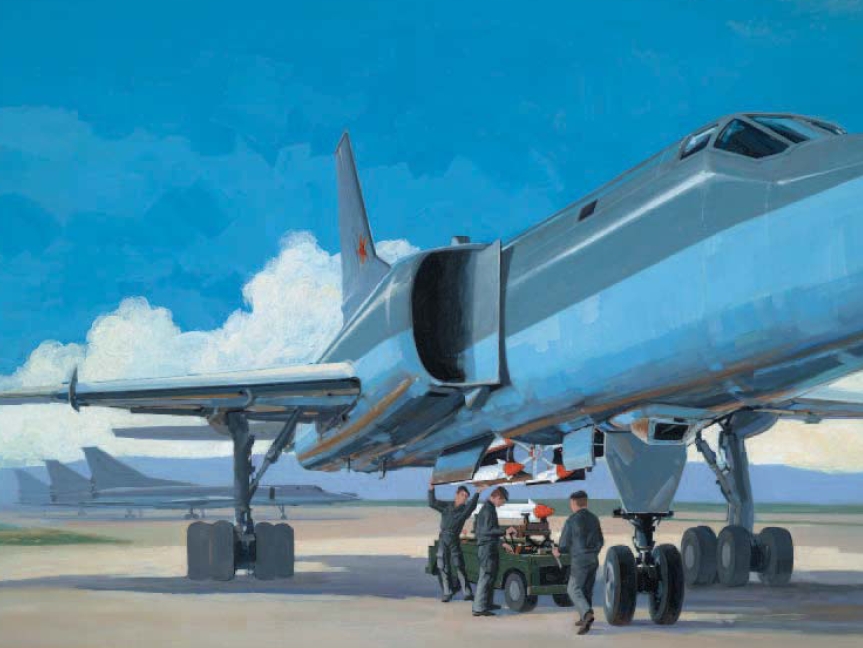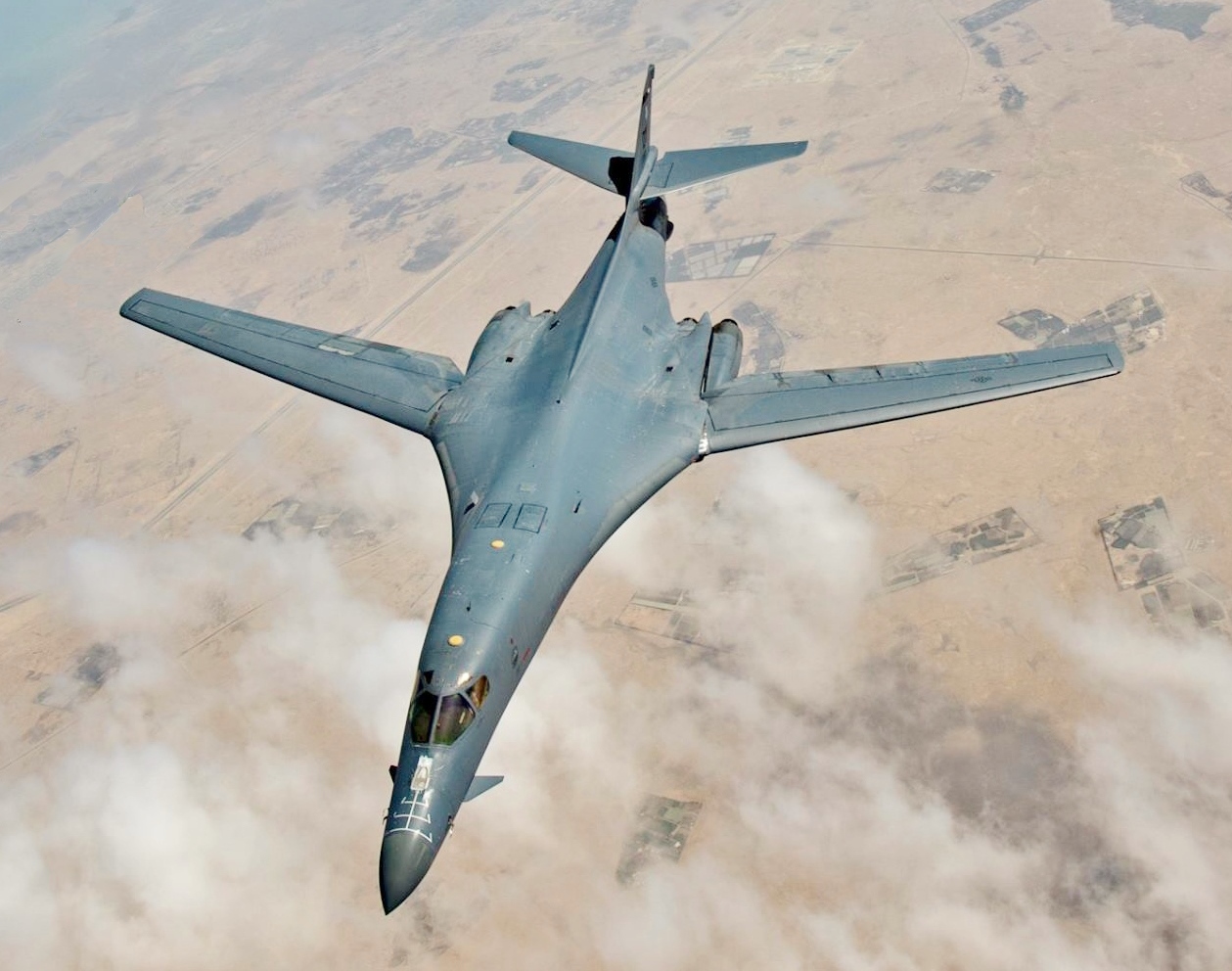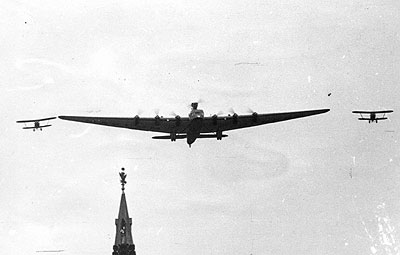|
Tu-22M
The Tupolev Tu-22M (; NATO reporting name: Backfire) is a supersonic, variable-sweep wing, long-range strategic and maritime strike bomber developed by the Tupolev Design Bureau in the 1960s. The bomber was reported as being designated Tu-26 by Western intelligence at one time. During the Cold War, the Tu-22M was operated by the Soviet Air Forces (VVS) in a missile carrier strategic bombing role, and by the Soviet Naval Aviation (''Aviatsiya Voyenno-Morskogo Flota'', AVMF) in a long-range maritime anti-shipping role. In 2024, the Russian Air Force had 57 aircraft in service, according to the 2024 Military Balance report by International Institute for Strategic Studies. However, in 2023, Ukraine's Main Directorate of Intelligence estimated that Russia had only 27 aircraft in operable condition. Development In 1962, after the introduction of the Tupolev Tu-22, it became increasingly clear that the aircraft was inadequate in its role as a bomber. In addition to widespread unse ... [...More Info...] [...Related Items...] OR: [Wikipedia] [Google] [Baidu] |
Kh-22
The Kh-22 "Storm" (, NATO reporting name AS-4 'Kitchen') is a large, long-range anti-ship cruise missile developed by MKB Raduga in the Soviet Union. It was designed for use against aircraft carriers and carrier battle groups, with either a conventional or nuclear warhead. Kh-32 is an updated conventional variant of the Kh-22 and was accepted to service in 2016; it features an improved rocket motor and a new seeker head. Development After analyzing World War II naval battles and encounters in the late 1940s and early 1950s, Soviet military thinkers concluded that the era of large seaborne battles was over, and that stand-off attacks would be the way to neutralize and incapacitate large battle groups without having to field a similar force against them. Substituting cruise missiles for air attacks, Soviet Air Forces and Soviet Naval Aviation commanders set about converting their heavy bombers to ''raketonosets'', or missile carriers, which could be launched against approachin ... [...More Info...] [...Related Items...] OR: [Wikipedia] [Google] [Baidu] |
Tupolev Tu-22
The Tupolev Tu-22 ( Air Standardization Coordinating Committee name: Blinder) was the first supersonic bomber to enter production in the Soviet Union. Manufactured by Tupolev, the Tu-22 entered service with Long-Range Aviation and Soviet Naval Aviation in the 1960s. The aircraft was a disappointment, lacking both the speed and range that had been expected. It was also a difficult design to fly and maintain. It was produced in small numbers, especially compared to the Tupolev Tu-16 it was designed to replace. The aircraft was later adapted for other roles, notably as the Tu-22R reconnaissance aircraft and as a carrier for the long-range Kh-22 antiship missile. Tu-22s were sold to other nations, including Libya and Iraq: Libyan Tu-22s were used against Tanzania and Chad, and Iraqi Tu-22s were used during the Iran–Iraq War. Development Previous efforts Andrei Tupolev's OKB-156 had successfully converted the Boeing B-29 Superfortress into the Tupolev Tu-4, while their ... [...More Info...] [...Related Items...] OR: [Wikipedia] [Google] [Baidu] |
Ukrainian Air Force
The Ukrainian Air Force (, PS ZSU) is the air force of Ukraine and one of the eight Military branch, branches of the Armed Forces of Ukraine (ZSU). Its current form was created in 2004 by merging the Ukrainian Air Defence Forces into the Air Force. When the Soviet Union dissolved in 1991, many aircraft were left in Ukrainian territory. After Ukrainian independence in 1991, the air force suffered from chronic under-investment, leading to the bulk of its inventory becoming mothballed or otherwise inoperable. However its domestic defense industry Ukroboronprom and its Antonov subsidiary are able to maintain its older aircraft. The Ukrainian Air Force participated in the War in Donbas (2014–2022), war in Donbas. Following the 2014 ceasefire, the air force was suspended from carrying out missions in the areas of Donbas. Since February 2022, the Air Force has been engaged in constant combat operations in the face of the Russian invasion of Ukraine. The air force flies General Dynam ... [...More Info...] [...Related Items...] OR: [Wikipedia] [Google] [Baidu] |
Strategic Bomber
A strategic bomber is a medium- to long-range Penetrator (aircraft), penetration bomber aircraft designed to drop large amounts of air-to-ground weaponry onto a distant target for the purposes of debilitating the enemy's capacity to wage war. Unlike tactical bombing, tactical bombers, Penetrator (aircraft), penetrators, fighter-bombers, and attack aircraft, which are used in air interdiction operations to attack enemy combatants and military equipment, strategic bombers are designed to fly into enemy territory to destroy strategic targets (e.g., infrastructure, logistics, Military base, military installations, factories, etc.). In addition to strategic bombing, strategic bombers can be used for tactical bombing, tactical missions. There are currently only three countries that operate strategic bombers: the United States, Russia and China. The modern strategic bomber role appeared after Strategic bombing during World War II, strategic bombing was widely employed, and Atomic bombing ... [...More Info...] [...Related Items...] OR: [Wikipedia] [Google] [Baidu] |
Russian Air Force
The Russian Air Force () is a branch of the Russian Aerospace Forces, the latter being formed on 1 August 2015 with the merging of the Russian Air Force and the Russian Aerospace Defence Forces. After the dissolution of the Soviet Union, the reborn Russian armed forces began to be created on 7 May 1992 following Boris Yeltsin's creation of the Ministry of Defence (Russia), Ministry of Defence. However, the Russian Federation's air force can trace its lineage and traditions back to the Imperial Russian Air Service (1912–1917) and the Soviet Air Forces (1918–1991). History The Russian Air Force, officially established on 12 August 1912, as part of the Imperial Russian Air Service, has a long and complex history. It began as one of the earliest military aviation units globally, although its early years saw slow development due to the constraints of World War I. After the Russian Revolution, Russian Revolution of 1917, the air service was reorganised under the Soviet regime, ev ... [...More Info...] [...Related Items...] OR: [Wikipedia] [Google] [Baidu] |
Tupolev
Tupolev ( rus, Туполев, , ˈtupəlʲɪf), officially United Aircraft Company Tupolev - Public Joint Stock Company, is a Russian aerospace and Arms industry, defence company headquartered in Basmanny District, Moscow. UAC Tupolev is successor to the Soviet Tupolev Design Bureau (OKB-156, Soviet Union military aircraft designation systems#Soviet system after December 9.2C 1940, design office prefix ''Tu'') founded in 1922 by aerospace pioneer and engineer Andrei Tupolev, who led the company for 50 years until his death in 1972. Tupolev designed over 100 models of civilian and military aircraft and produced more than 18,000 aircraft for Russia, the Soviet Union and the Eastern Bloc since its founding, and celebrated its 100th anniversary on 22 October 2022. Tupolev is involved in numerous aerospace and defence sectors including development, manufacturing, and overhaul for both civil and military aerospace products such as aircraft and weapons systems, and also missile and nava ... [...More Info...] [...Related Items...] OR: [Wikipedia] [Google] [Baidu] |
Bomber
A bomber is a military combat aircraft that utilizes air-to-ground weaponry to drop bombs, launch aerial torpedo, torpedoes, or deploy air-launched cruise missiles. There are two major classifications of bomber: strategic and tactical. Strategic bombing is done by heavy bombers primarily designed for long-range bombing missions against strategic targets to diminish the enemy's ability to wage war by limiting access to resources through crippling infrastructure, reducing industrial output, or inflicting massive civilian casualties to an extent deemed to force surrender. Tactical bombing is aimed at countering enemy military activity and in supporting offensive operations, and is typically assigned to smaller aircraft operating at shorter ranges, typically near the troops on the ground or against enemy shipping. Bombs were first dropped from an aircraft during the Italo-Turkish War, with the first major deployments coming in the World War I, First World War and World War II, Seco ... [...More Info...] [...Related Items...] OR: [Wikipedia] [Google] [Baidu] |
Tupolev Tu-22M3 Taking Off At Ryazan Dyagilevo
Tupolev ( rus, Туполев, , ˈtupəlʲɪf), officially United Aircraft Company Tupolev - Public Joint Stock Company, is a Russian aerospace and defence company headquartered in Basmanny District, Moscow. UAC Tupolev is successor to the Soviet Tupolev Design Bureau ( OKB-156, design office prefix ''Tu'') founded in 1922 by aerospace pioneer and engineer Andrei Tupolev, who led the company for 50 years until his death in 1972. Tupolev designed over 100 models of civilian and military aircraft and produced more than 18,000 aircraft for Russia, the Soviet Union and the Eastern Bloc since its founding, and celebrated its 100th anniversary on 22 October 2022. Tupolev is involved in numerous aerospace and defence sectors including development, manufacturing, and overhaul for both civil and military aerospace products such as aircraft and weapons systems, and also missile and naval aviation technologies. In 2006, Tupolev became a division of the United Aircraft Corporation in a m ... [...More Info...] [...Related Items...] OR: [Wikipedia] [Google] [Baidu] |
Variable-sweep Wing
A variable-sweep wing, colloquially known as a "swing wing", is an airplane wing, or set of wings, that may be modified during flight, swept back and then returned to its previous straight position. Because it allows the aircraft's shape to be changed, it is a feature of a variable-geometry aircraft. A straight wing is most efficient for low-speed flight, but for an aircraft designed for transonic or supersonic flight it is essential that the wing be swept. Most aircraft that travel at those speeds usually have wings (either swept wing or delta wing) with a fixed sweep angle. These are simple and efficient wing designs for high speed flight, but there are performance tradeoffs. One is that the stalling speed is increased, necessitating long runways (unless complex high-lift wing devices are built in). Another is that the aircraft's fuel consumption during subsonic cruise is higher than that of an unswept wing. These tradeoffs are particularly acute for naval carrier-bas ... [...More Info...] [...Related Items...] OR: [Wikipedia] [Google] [Baidu] |
Soviet Naval Aviation
Soviet Naval Aviation (AV-MF, ) was the naval aviation arm of the Soviet Navy. Origins The first naval aviation units in Russia were formed in 1912–1914 as a part of the Baltic Fleet and the Black Sea Fleet. During World War I, the hydroplane units were used in the Black Sea for conducting aircraft reconnaissance, bombing and firing at coastal and port installations and enemy ships, and destroying submarines and enemy aircraft on the airfields. Civil War and Interwar Period The regular Soviet naval aviation units were created in 1918. They participated in the Russian Civil War, cooperating with the ships and the army during the combats at Petrograd, on the Baltic Sea, the Black Sea, the Volga, the Kama River, Northern Dvina and on the Lake Onega. The newborn Soviet Naval Air Force consisted of only 76 obsolete hydroplanes. Scanty and technically imperfect, it was mostly used for resupplying the ships and the army. In the second half of the 1920s, the Naval Aviation ... [...More Info...] [...Related Items...] OR: [Wikipedia] [Google] [Baidu] |
Soviet Air Force
The Soviet Air Forces (, VVS SSSR; literally "Military Air Forces of the Union of Soviet Socialist Republics"; initialism VVS, sometimes referred to as the "Red Air Force") were one of the air forces of the Soviet Union. The other was the Soviet Air Defence Forces. The Air Forces were formed from components of the Imperial Russian Air Service in 1917, and faced their greatest test during World War II. The groups were also involved in the Korean War, and dissolved along with the Soviet Union itself in 1991–92. Former Soviet Air Forces' assets were subsequently divided into several air forces of former Republics of the Soviet Union, Soviet republics, including the new Russian Air Force. The "Air March, March of the Pilots" was its marching song. Origins The first military aviation branch of Russia or any of the Soviet Union's constituent states was the short-lived Imperial Russian Air Service, founded in 1912 and disbanded in 1917 with the onset of the Bolshevik Revolution and ... [...More Info...] [...Related Items...] OR: [Wikipedia] [Google] [Baidu] |






